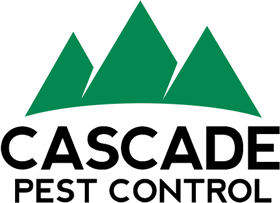Author: Kurt Treftz, Cascade Pest Control
Stunning natural beauty, temperate climate, vibrant cities, world-class education, and thriving arts & culture: it is no wonder that the Pacific Northwest continues to top lists of fast-growing areas. But new (and old) Pacific Northwest homeowners need to be aware of a destructive pest that also calls this region home: termites.
Termites (along with carpenter ants and wood-decay fungus) are a threat to wood houses and structures around the PNW. So, what can you do to recognize and prevent these wood-destroying pests? You need an effective termite control and termite prevention strategy.
Types of Termites
There are primarily two types of termites that impact the Pacific Northwest. Dampwood termites live within and eat wood with a high-moisture content. So, they are typically found in homes with leaks or water problems. They aren’t quite as problematic as the second type of termite found around here: subterranean termites.
Subterranean termites cause significant amounts of damage because they can often go undetected for a long time. Sub (under) terranean (soil) means that these pests live underground and find their source of moisture there. Then they build tunnels up from their protected underground burrows to find wood cellulose to consume.
Inside their mud tunnels they are fairly protected and able to maintain their moisture. This allows them to reach wood framing in homes and businesses from below ground.
Identifying Termites
The Western Subterranean termite is quite small. They range from 0.18 inch for the worker caste (about the size and appearance of a grain of rice) to 0.38 inch for the reproductive form (which are dark with brownish-gray wings). While these wood-eating insects perform a vital role in the world’s ecosystem, they can also start consuming the structures that house us. Even in buildings with concrete foundations, these small pests are able to find wood to consume in joints between walls, frost cracks, and areas around plumbing. This access provides the point of attack to the rest of the structure.
Dampwood termites are larger than their cousin. In their reproductive form, they can top 1 inch in length. They are usually cream-colored to dark brown. Soldiers or workers are closer to 0.75 inch with a large reddish brown/black head and a cream-colored body. These termites aren’t quite as destructive as subterranean termites even with their larger size. Because their moisture source is the wood they are living in and eating, they need damp wood (as their name implies) to survive, so they aren’t quite the threat to structures as the Subterranean termites.
Identifying a Termite Infestation
Keeping an eye out for possible infestations is a important step for any home or business ower. Look for the following to pratice good termite control.
- Look for tunneling around wood sources. (Smooth tunnels denote carpenter ants as they excavate the wood. Round, jagged tunnels are usually a sign of termites consuming the wood as they go.)
- Mud hills can be a sign of subterranean termites as they attempt to access the structure from underground.
- Dampwood termites discard their wings as they leave to establish another colony. Termites’ wings in spider webs can be a sign that termites are close by.
- Swarms of winged termites emerging from the base of the foundation or porch can be a sign of a structural infestation.
- Subterranean termite soldiers can also make a distinctive tapping sound when disturbed.
Preventing Termites
The best defense is a best offense. Here are some best practices in termite prevention.
- Control moisture: fix leaking pipes and dripping faucets (both inside and outside), downspouts should carry water away from the house, gutters should be cleared and not dripping on soil, ensure water runs away from the house and doesn’t pool next to the foundation or wood supports.
- Control access: fix cracks in the foundation, avoid all contact between wood and soil below the substructure. Keep 8 inches between soil and pier block under a structure. There should be at least 3 inches between the soil and wood siding or skirting. If your porch steps contact the soil, there is potential for termite access. Also, stacking firewood against your wood siding can leave an open invitation to termites.
- Control air flow: remove shrubbery that is blocking vents and preventing air flow, vents in the foundation or even between joists help funnel air and aid in drying, wood girders entering foundations need 1 inch of free air space on both sides and should be protected with a moisture blocking seal.
- Remove or break shelter tubes. This will interrupt access to your house and also allow ants to attack the termite colony and further reduce the termite population.
What To Do If You Have Termites?
If you are concerned that you have termites, don’t wait. Contact the professionals at Cascade Pest Control to get started on treating the infestation and protecting your home or business from further damage. Cascade termite control experts will inspect your structure to determine the extent and type of infection (subterranean or dampwood). And then they will get to work on a plan to eradicate the threat.
Even if you don’t have a current infestation, the experts at Cascade can inspect your home or business for vulnerabilities and termite prevention.
Call today: 888-989-8979
